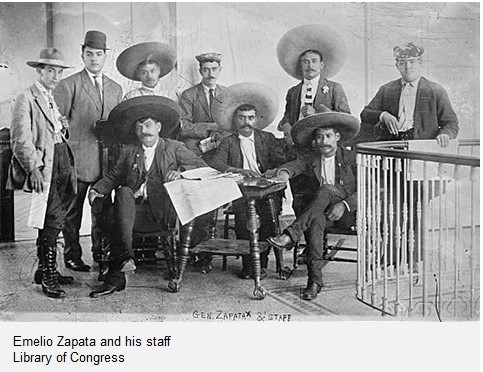New library resources pertaining to Central America and the Caribbean

Middlebury (Vermont) users now have access to over a dozen new collections of primary source material that pertain to the Caribbean and Central America.
Caribbean resources
- Caribbean Newspapers, 1718-1876 — the largest online collection of 18th- and 19th-century Caribbean newspapers
- Caribbean history and culture, 1535-1920 - Books, pamphlets, almanacs, broadsides, and ephemera covering the diverse history of Caribbean islands over nearly 400 years
- Rastafari ephemeral publications from the Written Rastafari Archives Project - The provocative literary materials in this collection provides an historical time stamp and current affairs commentary on the transitional period in the Rastafari Movement’s development—a period extending from the early 1970s through to the present.
- Crisis in the Dominican Republic: Records of U.S. State Dept Central Files, February 1963-1966: This collection includes U.S. State Department, U.S. Embassy, and Dominican Republic governmental dispatches, instructions, and miscellaneous correspondence dealing with topics such as political affairs and government; public order and safety; military affairs; social matters (including history and culture); economic conditions (including immigration and emigration); industry and agriculture; communications and transportation; and navigation, from 1963-1966. (The material is in English.)
Documents of the Mexican Revolution, 1910-1920
- Emiliano Zapata 1901-1919 This collection comprises documentation related to the activities of Emiliano Zapata and the Liberation Army of the South. It consists mainly of correspondence exchanged between the headquarters and the camps and regional commands.
- Cuartel General Del Sur 1910-1925 Included here is correspondence addressed to Emiliano Zapata; combat reports; relations with troop commanders and officers; promotion and appointment requests; allegations of abuses committed by military personnel; applications for food, uniforms and ammunition; letters and telegrams on the transfer of prisoners.
- Colección Revolución 1910-1921 This collection was collected and collated by members of the Committee on Historical Research of the Mexican Revolution, under the direction of Isidro Fabela in 1958, in preparation for the publication of historical documents on the Mexican Revolution.
- Revolution In Mexico: The 1917 Constitution and its aftermath: Records Of The US State Department This collection of U.S. State Department records consists of political and military documents relating to the Mexican Revolution and its aftermath -1910-1924. These unique and insightful records provide an unprecedented look at the Mexican Revolution, which began in 1910 and continued sporadically until the new Constitution was adopted in 1917, through to and including the election of Calles.
Other Central American countries
- Revolution In Honduras and American Business: The Quintessential Banana Republic Honduras is the “standard” for a “banana republic” having been O. Henry’s model. This collection would detail both the political and financial machinations of the fruit companies, but also the graft and corruption of the national government, the American banking community’s loans, the U.S. government’s response and the various aborted popular/revolutionary uprisings.
- Nicaragua: Political Instability and US Intervention, 1910-1933 The United States kept a contingent force in Nicaragua almost continually from 1912 until 1933. Although reduced to 100 in 1913, the contingent served as a reminder of the willingness of the United States to use force and its desire to keep conservative governments in power. Comprising records of the State Department’s Central Classified Files, this collection contains records relating to the internal affairs of Nicaragua.
- Nicaragua: Records of the U.S. Department of State, 1960-1963 The documents in this archive trace developments primarily during the administration of President John F. Kennedy. Reports on commerce as well as memoranda on social welfare and documents from the embassy in San Jose, Costa Rica, are included.
- U.S. Relations with Panama and Operation JUST CAUSE The United States grew increasingly displeased with the regime of Panamanian strongman Manuel Noriega in the late 1980s. In December 1989, following attacks on members of the U.S. armed forces stationed in Panama, the United States struck back in Operation Just Cause. This collection from the George H. W. Bush Presidential Library includes letters, memoranda, reports, papers, cables, and notes related to all aspects of our relations with Panama.
- Panama: Records of the U.S. Department of State, 1950-1963 Documents in this collection trace U.S.-Panamanian relations during the Truman, Eisenhower, and Kennedy administrations.
Media Contact
Arabella is the Electronic Resources Manager & Library Systems Specialist

